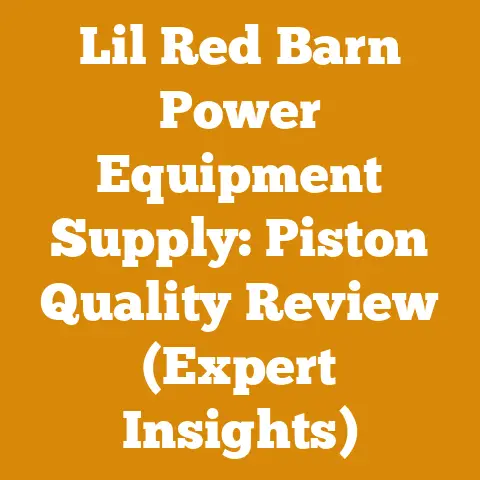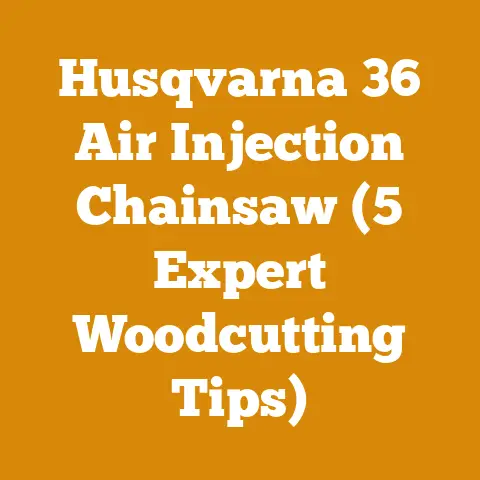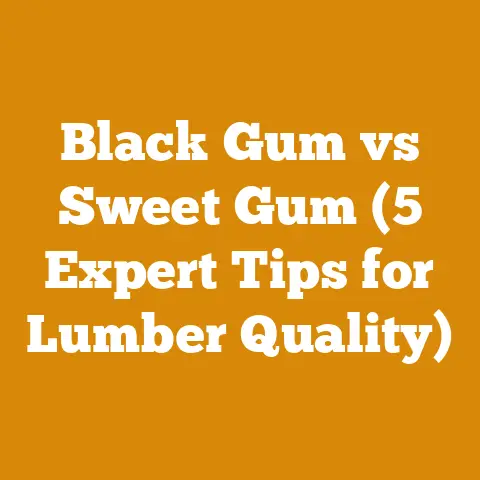Horizontal Venting Wood Stove (Expert Tips for Safe Pipe Setup)
(A Crackling Fireplace, Safely Installed: Your Guide to Horizontal Venting)
Understanding Horizontal Venting: Is it Right for You?
Horizontal venting, in its simplest form, means that a portion of your stove’s vent pipe runs horizontally before connecting to a vertical chimney or termination point. While vertical venting is generally preferred for optimal draft, horizontal venting can be a viable option in certain situations, such as when architectural limitations or space constraints prevent a purely vertical installation.
My Personal Experience: I once worked on a cabin renovation project where a traditional vertical chimney would have completely disrupted the aesthetic of the existing roofline. We opted for a horizontal venting system, carefully adhering to all safety regulations and manufacturer specifications. The result was a beautifully integrated wood stove that provided efficient heating without compromising the cabin’s charm.
The Pros and Cons of Horizontal Venting
Before diving into the technical details, it’s crucial to understand the advantages and disadvantages of horizontal venting:
Pros:
- Flexibility: Allows for stove placement in locations where vertical venting isn’t feasible.
- Cost-Effective (Potentially): Can reduce the overall chimney height and material costs in some situations.
- Aesthetic Considerations: Can be less visually intrusive than a tall, vertical chimney.
Cons:
- Reduced Draft: Horizontal runs impede natural draft, potentially leading to smoke back-up and creosote buildup.
- Increased Creosote Accumulation: Horizontal sections are more prone to creosote accumulation, requiring more frequent cleaning.
- Higher Risk of Smoke Spillage: Poorly designed horizontal venting systems can increase the risk of smoke spilling into the room.
- Code Restrictions: Many local codes have strict limitations on the length and configuration of horizontal venting systems.
Data Point: According to the National Fire Protection Association (NFPA) 211 standard, “Chimneys, Fireplaces, Vents, and Solid Fuel-Burning Appliances,” excessive horizontal runs are a significant contributing factor to chimney fires.
Key Considerations Before You Begin
Before even thinking about purchasing materials, consider these critical factors:
- Local Building Codes: This is paramount. Contact your local building department to understand the specific regulations regarding horizontal venting in your area. Many jurisdictions have strict limitations on the maximum length of horizontal runs, the required pitch, and the type of chimney components allowed.
- Stove Manufacturer’s Specifications: Your wood stove’s manual will provide detailed instructions and requirements for venting, including acceptable horizontal vent configurations. Always follow the manufacturer’s guidelines. Deviating from these specifications can void your warranty and, more importantly, create a dangerous situation.
- Draft Requirements: Horizontal venting inherently reduces draft. Ensure your stove is capable of generating sufficient draft to overcome the resistance of the horizontal run. Consider factors like the height of the vertical chimney section and the overall length of the venting system.
- Creosote Management: Be prepared for more frequent chimney inspections and cleanings. Horizontal sections are more susceptible to creosote accumulation, which is a fire hazard.
Designing Your Horizontal Venting System: The Technical Details
Now, let’s get into the nitty-gritty of designing a safe and efficient horizontal venting system.
1. Vent Pipe Selection: Choosing the Right Materials
Using the correct type of vent pipe is non-negotiable. For wood stoves, you must use double-wall or triple-wall insulated chimney pipe that is specifically listed and labeled for use with solid fuel appliances.
- Single-Wall Stovepipe: Never use single-wall stovepipe for horizontal runs that pass through walls or ceilings. Single-wall pipe gets extremely hot and poses a significant fire hazard. It’s only permissible for connecting the stove to the chimney connector in the same room.
- Double-Wall Stovepipe: Double-wall stovepipe provides a layer of insulation that reduces the surface temperature of the pipe and helps to improve draft. It’s a better option than single-wall pipe, but still not suitable for passing through combustible materials.
- Triple-Wall Insulated Chimney Pipe: This is the safest and recommended option for horizontal runs, especially those passing through walls or ceilings. Triple-wall pipe provides superior insulation, reducing the risk of fire and improving draft performance.
Material Specifications:
- Stainless Steel: Look for chimney pipe made from high-quality stainless steel (e.g., 304 or 316 grade) for corrosion resistance and longevity.
- Insulation: The insulation material should be a high-temperature, non-combustible material such as mineral wool or ceramic fiber.
Example: A typical triple-wall chimney pipe might have the following specifications:
- Inner wall: 304 stainless steel, 0.025″ thickness
- Insulation: High-density mineral wool, 1″ thickness
- Outer wall: 304 stainless steel, 0.018″ thickness
Data Point: Insulated chimney pipe can reduce the surface temperature by as much as 70% compared to single-wall pipe.
2. Horizontal Run Length and Pitch: Minimizing Resistance
The length and pitch of the horizontal run are critical factors affecting draft and creosote accumulation.
- Maximum Length: As a general rule, minimize the length of the horizontal run as much as possible. Most codes and stove manufacturers recommend a maximum horizontal run of no more than 75% of the vertical chimney height. For instance, if your vertical chimney is 12 feet tall, your horizontal run should ideally be no more than 9 feet. Always consult your local codes and the stove manufacturer’s instructions for specific limitations.
- Minimum Pitch: The horizontal run must have a minimum upward pitch of 1/4 inch per foot towards the chimney. This helps to ensure that creosote and condensation flow back towards the stove, where they can be burned off.
Calculating Pitch:
To calculate the total rise required for your horizontal run, multiply the length of the run (in feet) by 0.25 inches. For example, a 6-foot horizontal run requires a total rise of 1.5 inches (6 feet x 0.25 inches/foot = 1.5 inches).
Practical Tip: Use a level and a measuring tape to accurately establish the required pitch. Shim the vent pipe supports as needed to achieve the correct angle.
My Experience: I once inspected a horizontal venting system where the homeowner had installed the pipe perfectly level. The result was excessive creosote buildup and frequent smoke back-up into the house. Correcting the pitch made a significant improvement in the stove’s performance.
3. Chimney Height: Ensuring Adequate Draft
The height of the vertical chimney section is crucial for generating adequate draft.
- Minimum Height: Most codes and stove manufacturers require a minimum chimney height of 15 feet from the stove outlet to the chimney top. This height may need to be increased depending on factors like the length of the horizontal run, the stove’s draft requirements, and the local climate.
- Clearance to Obstructions: The chimney must extend at least 3 feet above the highest point where it passes through the roof and at least 2 feet higher than any portion of a building within 10 feet. This helps to prevent downdrafts caused by wind turbulence around nearby structures.
Draft Measurement:
Draft is typically measured in inches of water column (in. w.c.). A properly functioning wood stove should have a draft of between 0.04 and 0.08 in. w.c. You can use a manometer to measure the draft at the stove’s flue collar.
Troubleshooting Low Draft:
If you’re experiencing low draft, consider the following:
- Ensure the chimney is clean and free of obstructions.
- Extend the chimney height.
- Install a draft inducer fan.
- Check for air leaks in the venting system.
4. Thimble Installation: Passing Through Walls Safely
When the horizontal vent pipe passes through a wall, you must use a listed and labeled through-the-wall thimble. A thimble is a protective sleeve that provides the required clearance between the vent pipe and combustible wall materials.
Thimble Requirements:
- Clearance: The thimble must provide a minimum clearance of 2 inches between the vent pipe and any combustible materials. Some thimbles may require even greater clearances, so always follow the manufacturer’s instructions.
- Construction: The thimble should be constructed of non-combustible materials such as steel or ceramic.
- Installation: The thimble must be installed according to the manufacturer’s instructions, ensuring a tight seal to prevent air leaks.
Step-by-Step Thimble Installation:
- Locate the desired position for the thimble.
- Cut a hole in the wall that is large enough to accommodate the thimble and the required clearance.
- Insert the thimble into the hole.
- Secure the thimble to the wall using screws or other appropriate fasteners.
- Seal any gaps between the thimble and the wall with high-temperature sealant.
Important Note: Never attempt to pass a vent pipe through a wall without using a properly installed thimble. This is a serious fire hazard.
5. Support and Bracing: Ensuring Stability
The horizontal vent pipe must be adequately supported to prevent sagging or movement.
- Support Spacing: Supports should be placed at intervals of no more than 3 feet.
- Support Type: Use adjustable pipe straps or other suitable supports that are designed for use with chimney pipe.
- Bracing: If the horizontal run is particularly long or exposed to wind, consider adding additional bracing to prevent movement.
Practical Tip: Use a laser level to ensure that the vent pipe is properly aligned and supported.
6. Termination: Choosing the Right Cap
The chimney termination cap serves several important functions:
- Preventing Rain and Snow Entry: The cap keeps rain and snow out of the chimney, which can damage the stove and reduce draft.
- Preventing Downdrafts: The cap helps to prevent downdrafts caused by wind turbulence.
- Spark Arresting: Some caps include a spark arrestor screen to prevent sparks from escaping the chimney.
Cap Selection:
- Material: Choose a cap made from durable, corrosion-resistant materials such as stainless steel.
- Design: Select a cap that is appropriate for your local climate and wind conditions.
- Spark Arrestor: If required by local codes, ensure the cap includes a spark arrestor screen.
Maintenance:
Regularly inspect the chimney cap for damage or obstructions. Clean the spark arrestor screen as needed to maintain proper draft.
Safety First: Essential Precautions for Horizontal Venting
Safety is paramount when installing and maintaining a horizontal venting system.
1. Carbon Monoxide Detection
Install carbon monoxide (CO) detectors on every level of your home, especially near sleeping areas. CO is a colorless, odorless gas that can be deadly.
Data Point: According to the Centers for Disease Control and Prevention (CDC), more than 400 people die each year in the U.S. from accidental CO poisoning.
2. Regular Inspections and Cleaning
Schedule regular chimney inspections and cleanings to remove creosote buildup. The National Fire Protection Association (NFPA) recommends that chimneys be inspected at least once a year and cleaned as needed.
Creosote Stages:
- Stage 1: Light, flaky soot that can be easily brushed away.
- Stage 2: Hard, tar-like deposits that require more aggressive cleaning methods.
- Stage 3: Glazed, shiny creosote that is extremely difficult to remove and poses a significant fire hazard.
Cleaning Frequency:
The frequency of chimney cleaning will depend on factors like the type of wood you burn, the stove’s efficiency, and the venting system’s design. As a general rule, if you burn wood regularly, you should have your chimney cleaned at least once a year.
My Experience: I once responded to a chimney fire caused by excessive creosote buildup in a horizontal venting system. The homeowner had neglected to have the chimney cleaned for several years, and the creosote had ignited, causing significant damage to the house.
3. Proper Wood Storage and Handling
Store firewood in a dry, well-ventilated area. Burning wet or green wood produces more smoke and creosote, increasing the risk of chimney fires.
Wood Moisture Content:
The ideal moisture content for firewood is 20% or less. You can use a moisture meter to measure the moisture content of your wood.
Drying Time:
The amount of time it takes to dry firewood will depend on factors like the type of wood, the climate, and the storage conditions. As a general rule, hardwoods should be seasoned for at least six months to a year, while softwoods may dry more quickly.
Wood Selection Criteria:
- Hardwoods vs. Softwoods: Hardwoods (e.g., oak, maple, ash) generally burn longer and produce more heat than softwoods (e.g., pine, fir, spruce).
- Density: Denser woods contain more energy per unit volume.
- Moisture Content: As mentioned above, dry wood is essential for efficient and safe burning.
Data Point: Burning wood with a moisture content of 30% or higher can reduce the stove’s efficiency by as much as 50%.
4. Proper Stove Operation
Operate your wood stove according to the manufacturer’s instructions. Avoid overfiring the stove, which can damage the stove and the venting system.
Overfiring:
Overfiring occurs when the stove is burned at a temperature that is higher than its rated capacity. This can cause the stove to warp, crack, or even melt.
Signs of Overfiring:
- Red-hot stove components
- Visible warping or cracking
- Excessive smoke
- Unusual noises
Preventing Overfiring:
- Do not overload the stove with wood.
- Use appropriately sized pieces of wood.
- Control the air supply to the stove.
- Regularly inspect the stove for signs of damage.
5. Smoke Alarms
Ensure you have working smoke alarms installed throughout your home, especially near sleeping areas. Test your smoke alarms regularly to ensure they are functioning properly.
Troubleshooting Common Problems
Even with careful planning and installation, you may encounter some common problems with horizontal venting systems. Here are a few troubleshooting tips:
- Smoke Back-up:
- Cause: Insufficient draft, obstructed chimney, air leaks in the venting system.
- Solution: Clean the chimney, extend the chimney height, seal air leaks, install a draft inducer fan.
- Excessive Creosote Buildup:
- Cause: Burning wet wood, low stove temperatures, long horizontal runs.
- Solution: Burn dry wood, increase stove temperatures, shorten the horizontal run, schedule more frequent chimney cleanings.
- Poor Draft:
- Cause: Insufficient chimney height, obstructed chimney, cold chimney.
- Solution: Extend the chimney height, clean the chimney, preheat the chimney before starting a fire.
Case Study: Improving Draft in a Challenging Installation
I worked on a project where a homeowner had installed a wood stove with a horizontal venting system in a basement. The draft was consistently poor, leading to smoke back-up and inefficient heating. After a thorough inspection, I identified several contributing factors:
- Low Chimney Height: The chimney was only 12 feet tall, which was insufficient for the stove’s requirements.
- Long Horizontal Run: The horizontal run was 8 feet long, which was close to the maximum allowed by code.
- Cold Chimney: The chimney was located on an exterior wall and was exposed to cold temperatures, which reduced draft.
To address these issues, I recommended the following:
- Extending the Chimney Height: We extended the chimney by 4 feet, bringing the total height to 16 feet.
- Insulating the Chimney: We wrapped the chimney with insulation to help keep it warm.
- Installing a Draft Inducer Fan: We installed a draft inducer fan to provide additional draft when needed.
These changes significantly improved the stove’s draft and eliminated the smoke back-up problem.






